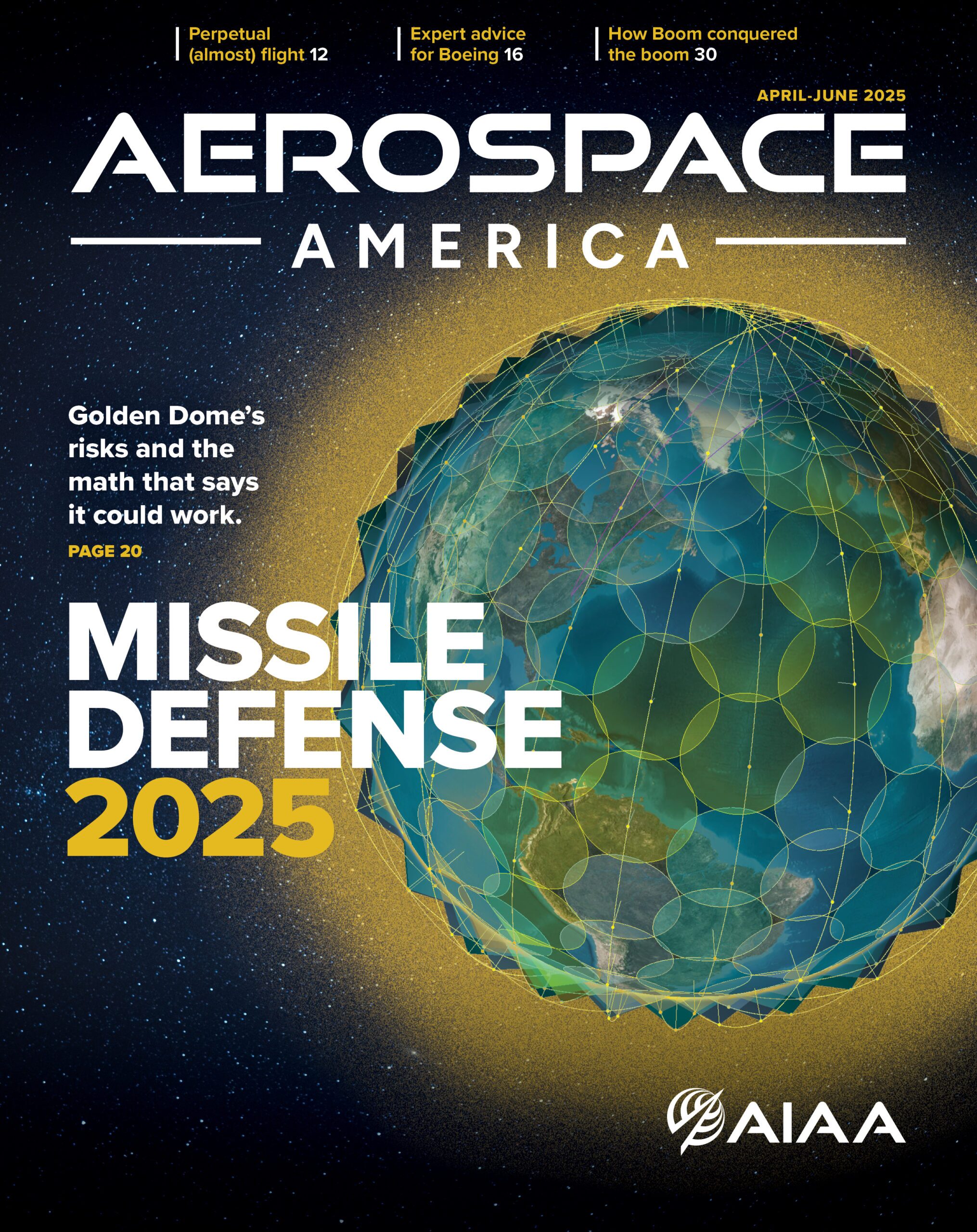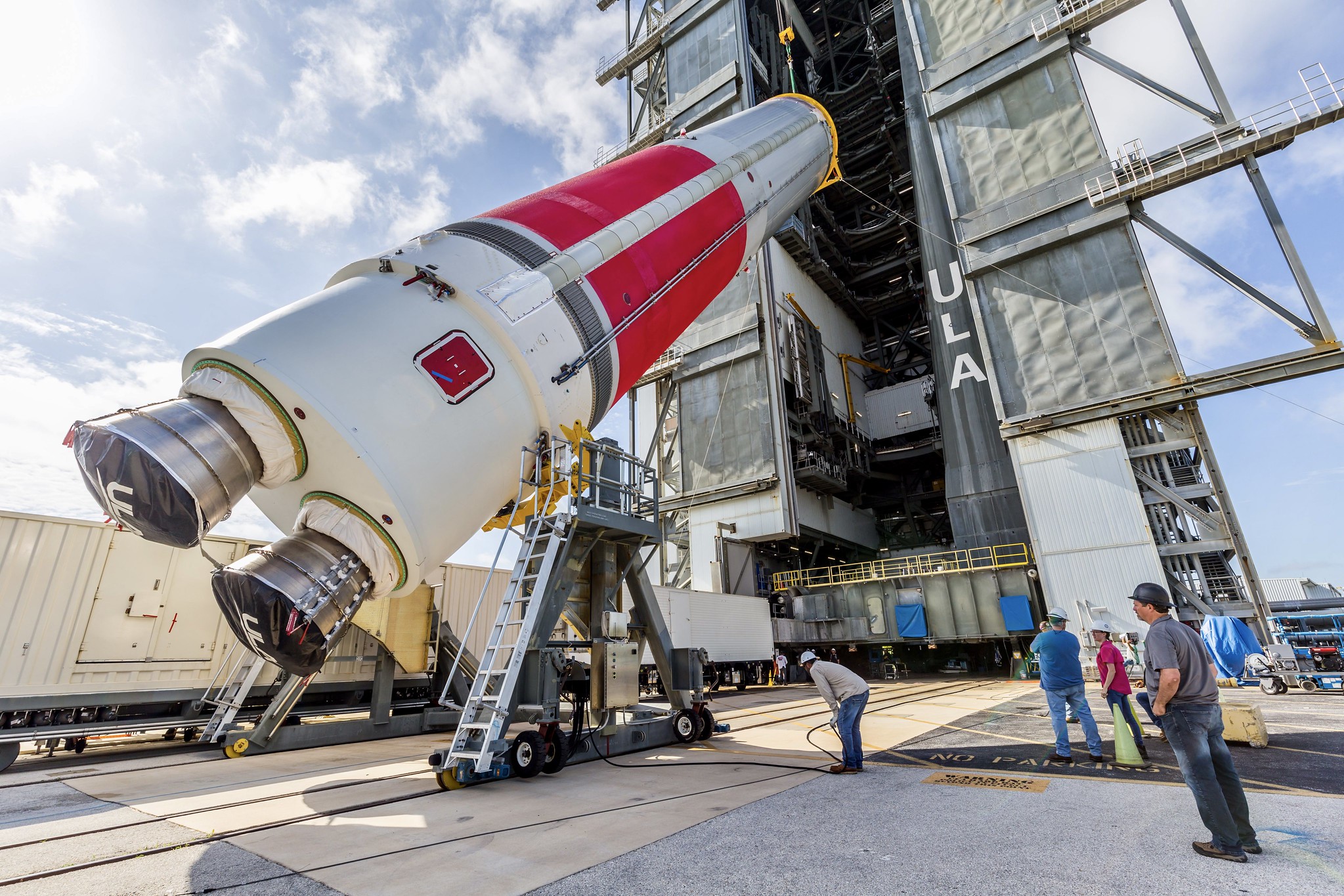Stay Up to Date
Submit your email address to receive the latest industry and Aerospace America news.
ULA began stacking the latest Vulcan Centaur rocket in July, in preparation for Tuesday’s national security launch from Cape Canaveral, Florida. Credit: ULA
United Launch Alliance is on track to fly nine missions in 2025 and predicts that cadence will sharply increase in the coming years, according to the company’s chief executive.
“We expect to hit our twice-a-month tempo before the end of the year, so that as we roll into 2026 that forecast is somewhere between 20 and 25 launches,” Tory Bruno told reporters during a virtual roundtable today.
ULA had hoped to reach 20 missions this year, especially after receiving U.S. Space Force certification to launch national security payloads aboard its Vulcan Centaur, the successor to the Atlas V design that has been flying since 2002. But that goal slipped out of reach after the company had to spend several months investigating an issue on Vulcan’s second flight in October 2024.
The nozzle of one of the rocket’s solid rocket boosters fell off shortly after liftoff, which ULA later traced to a manufacturing defect that Bruno said has since been corrected. ULA is targeting Tuesday, Aug. 12, for the first national security launch with a Vulcan.
Partly due to that delay, the 2026 manifest is “pretty crowded,” Bruno said.
“Someone would have to drop out of line in order for us to make a slot for someone else,” he said, adding that “as we go into ’27, it’s really the same story. So we’re in that good problem of having more customers wanting to ride on this rocket than is easy to accommodate.”
Thirteen of those flights — all for commercial customers — will be on Atlases, after which the design will be retired. “All but the last two” of those rockets “are fully finished and literally in storage,” Bruno said. “We’ve got almost half a dozen Vulcans fabricated and in storage waiting to go as well.”
To prepare for this transition, ULA has been modifying the Space Launch Complex 3 pad at Vandenberg Space Force Center in California to accommodate the Vulcans. On the Florida coast, the company is in the midst of constructing a second vertical integration facility and mobile launch platform at Cape Canaveral Space Force Station. Both of those projects are on track to be completed this year, Bruno said.
“Baseline average we are designed to and building our infrastructure to will be 25” launches a year, he said. If demand surges to above 30, “we think we’re probably going to need to invest a little bit more in infrastructure to be able to keep up.”
Asked whether such an increase seemed likely, he pointed to “modest but steady growth” on the national security side, particularly as development progresses on President Donald Trump’s planned Golden Dome missile defense shield. In the commercial realm, he cited broadband megaconstellations as the big driver. Amazon has contracted with ULA to conduct 38 launches for its Project Kuiper constellation, enough to orbit slightly more than half of the company’s planned 3,200 satellites.
“Those will add together,” Bruno said. “There is going to be an expanding demand for space launch for the foreseeable future, well into the next decade.”
And ULA isn’t the only company planning to grow. SpaceX plans to launch the first Starship from Florida later this year, pending completion of environmental reviews by FAA and the U.S. Space Force. The company is seeking to launch up to 44 Starships a year from Launch Complex 39A at NASA’s Kennedy Space Center and up to 76 from Launch Complex 37 at Cape Canaveral Space Force Station.
Asked about the potential impact to ULA, Bruno noted that Starship’s proposed cadence would be “unprecedented.”
“So we are counting on the Space Force and the FAA to do a very thorough analysis of that and how it will affect not just the ecological environment, but also the launch environment,” he said, “so that we can all use the range” and that “the capacity of our nation is greater and not smaller.”
About cat hofacker
Cat helps guide our coverage and keeps production of the print magazine on schedule. She became associate editor in 2021 after two years as our staff reporter. Cat joined us in 2019 after covering the 2018 congressional midterm elections as an intern for USA Today.
Related Posts
Stay Up to Date
Submit your email address to receive the latest industry and Aerospace America news.




